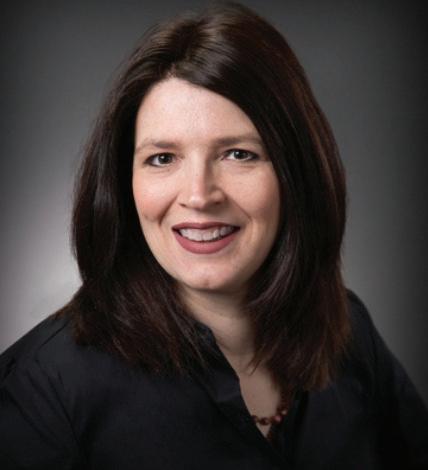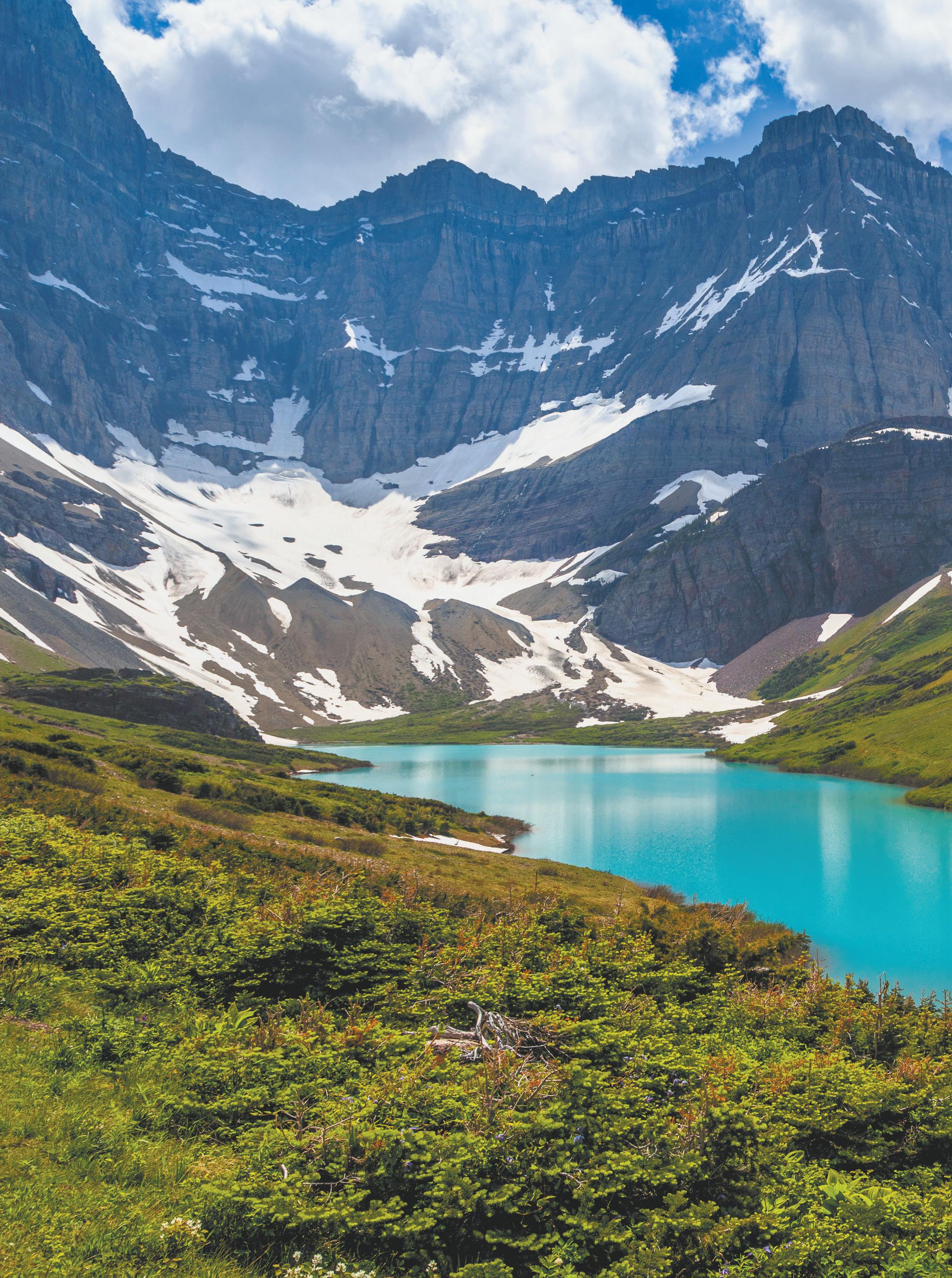
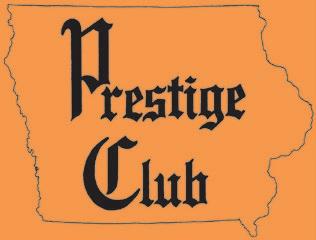



Featuring Historic Fort Worth, Texas
February 24 – March 2, 2026
Saddle up for an unforgettable journey into the heart of Texas!
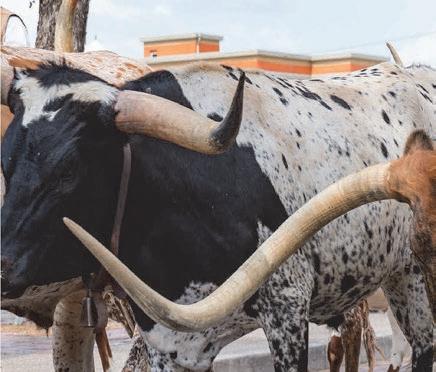


Join First State Bank’s Prestige Club for a brand-new adventure filled with Western charm, rich history, and modern flair.
Sneak Peek at the Stockyards
Capture the iconic cattle drive along Exchange Avenue, the rustic brick storefronts, and the lively Western atmosphere!
· Stroll through the Fort Worth Stockyards
· Experience an authentic cattle drive
· Tour world-class museums and cowboy landmarks
· Enjoy live entertainment, shopping, and delicious Southern cuisine
· Relax in premium accommodations with fellow Prestige Club travelers
Whether you’re drawn to history, cowboy culture, or Texas hospitality—this trip has it all!
What’s Included?
Roundtrip deluxe motorcoach transportation
6 Nights of Deluxe Accommodations
1 Night - Joplin, MO | Holiday Inn - Joplin
1 Night - Oklahoma City, OK | Hyatt Place OKC Bricktown
3 Nights - Fort Worth, TX | Home2 Suites - Fort Worth Cultural District
1 Night - Wichita, KS | Drury Plaza Hotel Broadview Wichita
All Taxes and Gratuities for Included Meals and Services
6 Breakfasts / 3 Lunches / 3 Dinners
All Admissions as Described on the Itinerary
Gratuities for Drivers, Guides, and Tour Manager



Don’t miss out!
Contact me, Kim Peck; Prestige Club Coordinator to reserve your seat or learn more!
515-832-2520
Visit any First State Bank location and pick up a registration packet.
Double Occupancy: $2,445 Per Person
Single Occupancy: $2,999 Per Person
Travel Protection Plan
Starting at $188 per Person Double Occupancy
Starting at $306 per Person Single Occupancy
Deadline for Registration and Final Payment - December 31, 2025

MEMBER FDIC








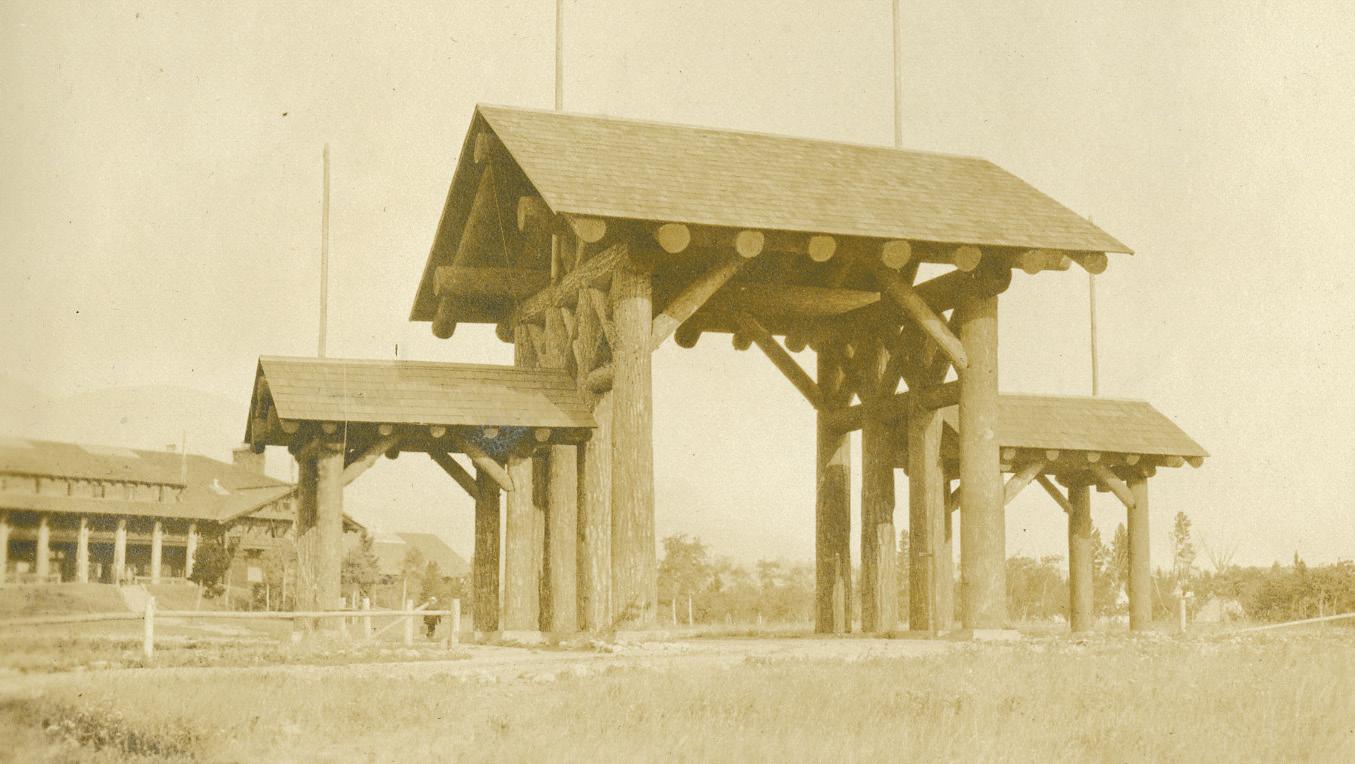
This is the sight that awaited Margaret and Murray McMurray as they alighted from the Great Northern train at Glacier Park Station in 1914.
While passengers walked the 1/3 mile to the hotel, often accompanied by Blackfoot Indians in full regalia, horse-drawn wagons carried their luggage.

Nearly all of Louis Hill’s early tours of Glacier National Park began here, in the splendid Glacier Park Lodge. The “Forest Lobby” was held up by 40 ft tall Douglas Fir logs more than 3 ft in diameter. The hotel was decorated with Blackfeet Indian rugs, paintings of the park by John Fery, and lit with large Japanese lanterns. Waitresses in Swiss costume served hearty meals in the dining room, and bedrooms had steam heat, hot and cold running water, and scenic views. It all added up to sumptous luxury in the wilderness.
By Robert E. Oliver


Showing the stunning mountain settings of the Swiss Chalets, here is one of them called “Sun Camp” beneath Going-to-the-Sun Mountain.
Travelers arrived by motor launches (small boats) such as that seen in the photo.
On that clear, cold winter day, when the new year of 1914 dawned in Webster City, the future must have seemed unlimited to 25-year-old Murray McMurray.
After all, he’d married his college sweetheart six months earlier. And he’d been recently appointed assistant cashier at Hamilton County Bank, the oldest and largest in the county and half-owned by his father, L.A. McMurray.
When the time came, there was no question Murray McMurray, scion of one of Webster City’s leading families, would go to college. Well-grounded in the progressive beliefs of his family’s Congregationalist Christianity, and with faith in the future of Iowa, he enrolled at Grinnell College, in Grinnell, Iowa.
Margaret McMurray shown at their lodgings at Sun Camp.
A 1915 brochure suggested the following wardrobe for those seeing the park on horseback: “women should have either stout shoes or boots and short, divided riding skirts.” also suggested were 3 pair heavy wool socks, 2 pr cotton gloves, slicker or light raincoat, and sweater or wool jacket. Riding and hiking through the park for 8-10 days wasn’t for the faint-of-heart, so we may assume Margaret was no shrinking violet.

Swiss style chalets set on McDermott Lake in the heart of the park’s most glorious scenery, looked like this. The boulders on the roof, an idea borrowed from the Swiss, hold the roof in place in the event of high winds. All chalets featured full meals cooked and served to the exacting standards of Great Northern’s renowned dining car department.
Founded in 1846, Grinnell was one of the nation’s first colleges to award bachelor’s degrees to women. Four generations of McMurrays would follow him to Grinnell. In 2025, it remains one of the top-ranked liberal arts colleges in the country.
As something that was clearly his own idea, McMurray went on to earn a master’s in forestry from Yale University in New Haven, Connecticut. He pursued his second degree purely from personal interest, one of the privileges afforded by his family’s wealth. More than anything, however, it was a testimony to McMurray’s life-long love of nature and the outdoors.
In the early years of the 20th century, leisure travel was a prerogative of the well-off. Even a brief sightseeing trip with the family was out of reach to most Webster Cityans. Once more, the McMurrays were not typical; they had an established habit of educational, touristic travel.
McMurray, and his wife, the former Margaret Miller, whom he met at Grinnell, were not only affluent, but daring. They demonstrated a flair for active, outdoor travel on their two-week honeymoon trip to the Smokey Mountains of Kentucky and Tennessee.
Once in the mountains, it’s easy to imagine the energetic young couple “trekking,” both with and without horses, and exploring the magnificence of Cades Cove, then, as now, an outstanding scenic highlight of the Smokeys. They may even have ventured underground into the limestone caverns of Gregory’s Cave, in the company of an experienced guide, of course.
Returning to everyday life in Webster City, the McMurrays would be thinking ahead to their next travel adventure. In this, they were aided by their earnest hometown newspaper, the Webster City Freeman, which, like most small papers of the era, was filled with exciting stories of travel adventure, both in the U.S. and overseas.
The first true “tourist attractions” in the United States were in the nation’s settled northeast. In the 1830s Niagara Falls, the Adirondacks and Saratoga Springs all attracted well-heeled visitors. It’s a safe assumption the McMurrays knew of one or more of these attractive places.
Less than 200 miles from Webster City, in St. Paul, Minnesota, the son of another (very) rich man, Louis W. Hill, was also thinking about tourism. Like Murray McMurray, he was a Yale man, and, like McMurray, his love for mountains and the out of doors led him to travel regularly for his own edification and pleasure.
Hill’s father, James J. Hill, the “Empire Builder of The Northwest,” completed the last of America’s five transcontinental railroads — The Great Northern Railway — to the Pacific coast in 1893. In 1907, the elder Hill promoted himself to chairman of the board, allowing his son to ascend to the company’s presidency.
Like many of his class, Louis Hill had gone to Europe as a young man. Whether for exposure to European culture and sophistication or to see great art and architecture, a “Grand Tour” of Europe was an expected right of passage for children of America’s successful industrialists.

Like most small-town Midwesterners of his era, Murray McMurray was capable of riding a horse. He had to be to visit Glacier National Park in 1914, as horseback tours were the way 85% of visitors saw the park. The remainder walked through the park. At the height of its operation, the Park Saddle Horse Company was one of the largest operators of equine touring in the country.
In this, though, Hill was greatly conflicted. Why were Americans spending so much time and money touring Europe when their own country had so much to offer?
He was thinking, specifically, of a place high in the Montana Rockies along Great Northern’s main line that was as beautiful as any he’d seen in the Swiss Alps.
In May 1911 an act of Congress established that very territory as Glacier National Park.
With Glacier’s glorious landscape, protected as a national park, Hill lost no time. In just two quotations he revealed his strategy for building Glacier National Park into “An American Alps.”
“There is a variety of beauty in Glacier National Park, which is not surpassed anywhere in the world. Americans spend millions of dollars in Europe every year to see sights which are already equaled in this country. They need to be educated to realize this, and

The rustic interior of Lewis’s Glacier Hotel on the shores of Lake McDonald, are typical of other hotels and chalets in the park. This fine hotel, is still open today and known as Lake McDonald Lodge. The decor is largely unchanged from this 1914 photo.


Great Northern promoted the Blackfeet, once one of the fiercest of plains Indians as friendly and welcoming. Louis Hill paid some Blackfeet to meet trains at Glacier Park Station, accompany guests to the hotel, entertain with singing and drumming, and, as shown here, camp in places in the Park they would be noticed by tourists. McMurrays duly noticed and snapped this photo during their tour.
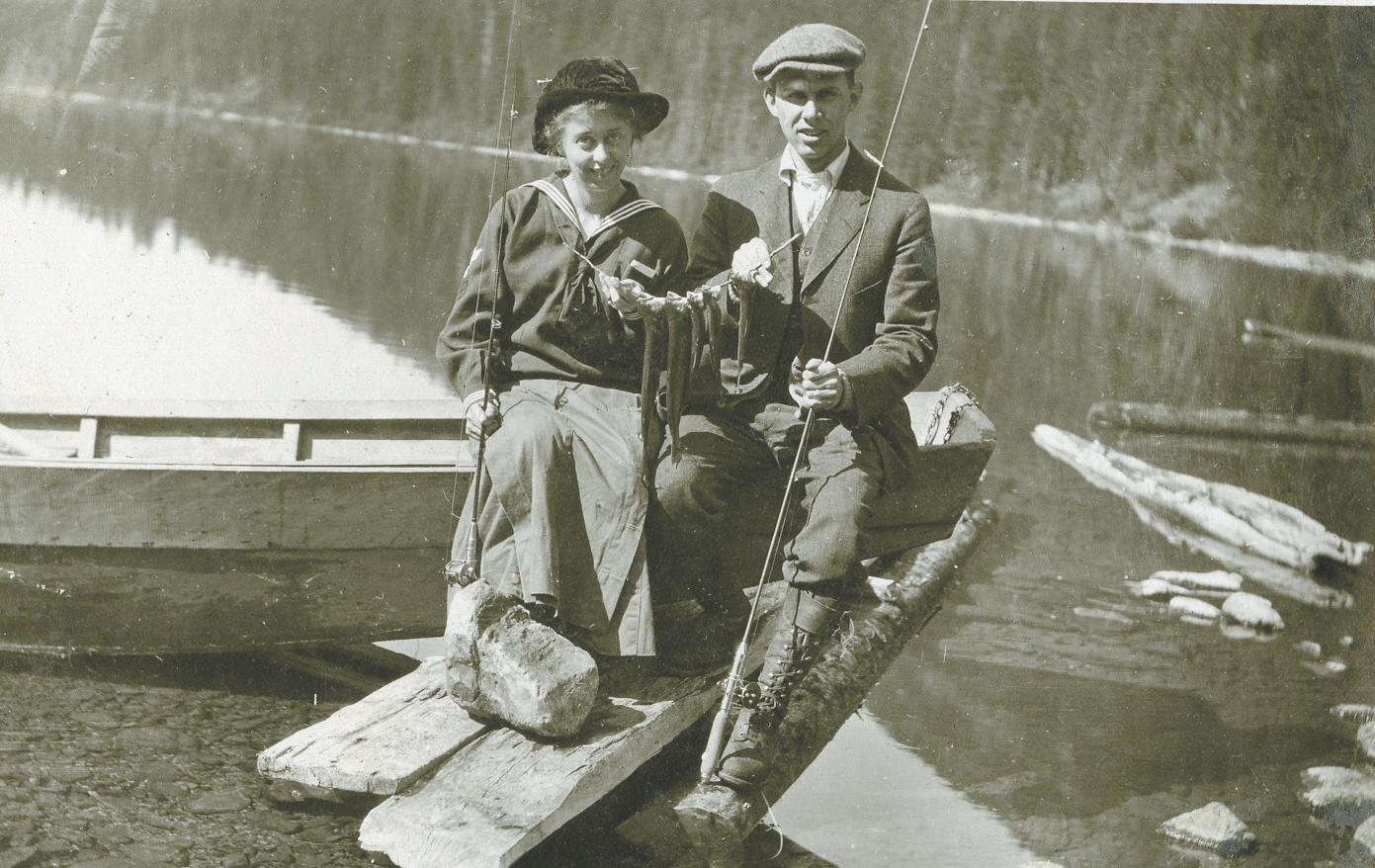
The handsome horse shown in this photo seems more than capable of carrying Margaret McMurray safely to the next chalet or hotel on her 1914 horseback tour of Glacier National Park. Most of the trails were wide and well-graded and maintained by Great Northern, and wranglers in charge of leading the tours were extremely capable outdoorsmen. Wranglers carried food, drink and a complete kitchen on pack animals to cook a fresh lunch in the wilderness for the dudes in his care.
In addition to the basic tour package of perhaps 5-7 days the McMurrays bought for their visit to Glacier Park, they added on a two-day excursion to Trout Lake, expressly to go fishing in a remotely-located high-altitude lake. The trails to get there required a strenuous effort by both man and horse, so we can readily conclude the Mc Murrays were fit, hearty, and definitely enjoyed fishing. From the looks of things it was all worth-while. When they returned to camp, a wrangler would clean the fish to be served that evening at dinner.

Glacier National Park should go far to help the ‘See America First movement.’
“A series of roads should be established throughout the park, with Swiss chalets scattered here and there, making a veritable American Alps.”
By 1914, on that cold, clear New Year’s Day in Webster City, Hill had built a series of tourist lodgings on the east side of Glacier National Park. A spectacular “entrance” hotel, Glacier Park Lodge, was located at Midvale, a station on the Great Northern just a few hundred yards from the hotel’s lobby.
Nine Swiss-style chalets had been built throughout the park’s backcountry, carefully sited to be a day’s walk — or horseback ride — apart.
At the same time Hill’s massive hotel and chaletbuilding campaign was moving forward, he mounted an advertising campaign to promote Glacier Park as a destination for those bent on an active, outdoor holiday in some of America’s finest mountain scenery. Hill directed Great Northern’s publicity department to mail well-written, often exciting, stories and accompanying photos and engravings of Glacier’s mountain scenery to newspaper editors across the nation.
Webster City papers printed many of those stories. The earliest this research turned up ran in the June 21, 1912, edition of The Daily Freeman Tribune. The headline read: “Opening The Glacier Park. New
Most visitors in 1914 bought a tour package of 3-5 days which included hotel or chalet lodging, all meals, saddle horses for transportation through the park, and an experienced guide. Judging from the photos they took, and places they visited, McMurrays opted for a longer stay.. Here their tour group is fording a mountain stream on horseback.
National Playground in Montana Will Soon Be Ready for the Tourist.” On Friday November 1, 1912, The Tribune ran a story titled, “Cutting Roadways in the Park. Work of Government Surveyors and Builders in Montana has been one of Difficulties.”
On July 29, 1913, The Tribune beckoned “active American women” to a new sport, glacier climbing, which it called an “ideal sport.” A month later the paper carried “The Diary of an Eastern Tenderfoot’s Journey over its (Glacier Park’s) Century Old Trails.” It was hard to miss the point: If an “eastern tenderfoot” could go to Glacier Park, just about anybody else could too.
We can’t absolutely confirm such articles were read by Margaret and Murray McMurray, but we don’t have to: They visited Glacier National Park on one of Louis Hill’s all-inclusive tour packages in the summer of 1914 and we have pictures to prove it — photos snapped with a Kodak Brownie camera or something similar. With thanks to Kendall Young Library for access to its historic photo archives, we’re pleased to illustrate this story with photos of Glacier Park taken 111 years ago by Murray McMurray.
One final note: Today you too can visit the hotels and chalets built by Louis W. Hill and visited by the McMurrays. They’re waiting for you in the spectacular scenery of Glacier National Park. And you can even still get there by Amtrak passenger train. The train’s name? The Empire Builder, just as it should be.


















































































One of my favorite songs from Jimmy Buffett is When the Coast is Clear off his Floridays album. It’s all about slowing down at the end of summer. When ‘the tourist traps are empty… the kids are back in school,’ that’s the time to hit the road for a quiet beach day.
I never rush summer. I savor it to the last delicious day. Reading in the summer should be just for fun, leisure, something different. I have shelves of great beach books; books that are worthy of an afternoon on a beach blanket, a cooler of Mountain Dew at my side, sunscreen at the ready — cell phone in the car where it cannot intrude.
A good beach book will take you farther away than a bathtub full of Calgon. They can be funny, dramatic, even scary, but they should never make you shed a tear. This is the season for laughter, and really not thinking all that hard. We can think the rest of the year — my beach book collection is calling.
Let’s have a look at just a few of them.
The 50th anniversary of the original summer blockbuster, Jaws, seems like a great time to not only watch the classic flick again, but to dive into the Peter Benchley novel that made it all possible. What made me pick up Jaws and read it the first time I really can’t recall. It’s definitely not in my typical genre. Thrillers are not my predictable choice. Good for me for stepping out of my usual lane. Summer is the perfect time to read something you would normally pass by.
No wonder the movie was such a blockbuster, this book is a pageturner like no other. I have never been more scared reading a book. The story and characters will take the reader back to summertime in the 1970s, even if we don’t live in a New England beach town. Sometimes being inland is a good thing.
Not to give away too much, but things might end differently in the book compared to the movie. Read it soon on your favorite beach. I dare ya.
By Lori Berglund

When one can’t make it to the beach, a vintage lawn chair on the backyard will do just fine for a little bit of summer reading.


























John Grisham has become one of my favorite authors in recent years; great stories, great characters. When the original Camino Island novel was published it was described as not being very ‘Grisham-like.’ Not sure about that, as Grisham also has others books where he steps off pace from the expected legal mystery/drama.






















































The three volumes, — Camino Island, Camino Winds and Camino Ghosts each stand well on their own, but I recommend starting with Camino Island in order to get to know the characters. They are an interesting bunch that inhabit this series. There is Mercer Mann, who inherits a delightful old beach cottage, allowing her to spend the summer walking the beach and browsing in Bruce Cable’s mysterious book store.









Cable and his wife, who owns the antiques store next door, throw lavish cocktail parties with an eclectic group of local authors who can’t wait to eat his food and drown in his wine. Parties here are notorious affairs, especially when the wife is away in Europe with her other love interest scouring for antiques. Don’t worry about Bruce; he doesn’t exactly behave himself, either.
In the second book of the series, Camino Winds, a hurricane comes to our little coastal town and most of the characters that we just got to know in the first book flee inland. I kind of miss them in this novel. Murder and mayhem abound with those who stay behind as the hurricane blows. Another good read, but not to the level of Camino Island.
I was skeptical when I saw the title of the third book in the series; Camino Ghosts, not my normal thing. But I was so wrong. It may be the best story in the series because it draws on the actual history of these tiny islands during the years that slavery gripped the nation. It’s very different reading from the relaxing read of the original, but the story is wonderfully told and you won’t want to put it down.
While I doubt it happens, I would love for Grisham to bring us a fourth in the series. Something that returns us to Mercer’s cottage, Bruce’s fascinating book store, the antique store, and all those wonderful if somewhat oddball local authors.
As much fun as a beach book can be, be sure not to spend all the time at the beach with your nose in a book.
Take a dip in the cool water and maybe create a sand creature to keep you company.














































































































I really can’t talk about beach books without mentioning my favorite girl to take to the beach, Mary Kay Andrews. While the other books I have mentioned would appeal to any gender, I think Mary Kay is pretty much in the ‘chick lit’ genre — particularly if you haven’t really been a chick since the 1990s.




A one-time crime beat reporter for the Atlanta JournalConstitution, Andrews wrote several mysteries under her given name, Kathy Hogan Trocheck, before creating the pen name of Mary Kay Andrews and switching over to the beach genre in the early 2000s.



Her best work, at least to my taste, blends a little bit of both — a good, light-hearted mystery at the beach. There’s Savannah Breeze, where our misfortunate lead character, BeBe Loudermilk, loses all of her earthly possessions, save a run-down motel, to a handsome charlatan. She promptly tidies up the 1960s-style motel and styles it with the help of her antique-picker friend. It would have taken me a month to do what these characters accomplish in a day, but it is fiction, after all.
Pity the man who did her wrong, because BeBe and her granddad, along with other fun-loving accomplices are coming after him.
Summer Rental is another favorite from Andrews. Ellis Sullivan has just been fired from her high-powered job in banking. Most people who have just lost a job would not head off to the beach for a month, but Ellis has already booked the house with three of her childhood friends. She’s always been a slave to common sense and should cancel, but her inner beach girl wins out and heads out in a driving rain to spend August at the beach.
This is my dream, to spend August at the beach. An entire month of beach days. There is much to love about this book; beach days, old friends, new beginnings. Spending a month at the beach when a person has just lost a job may sound crazy, but sometimes we just have to do the crazy things in life just to stay sane.
There was a book several years ago that said, “When I am an old woman I shall wear purple.” What’s wrong purple, I ask? But when I am an old woman, please take me to the beach. Life is better at the beach. I will watch the kids play, the old people sitting in the shade, I will count the white doves who dance above the water, and smile as the butterflys light at my side, saying hello.
The beach is calling, and I must go.

Webster City is proud to reaffirm its commitment to the 2021 International Property Maintenance Code (IPMC), which we have adhered to for years. In September 2024, we formally re-adopted the IPMC with fewer modifications, signaling our continued dedication to enhancing the beauty, safety, and overall quality of life in our community. This proactive effort reflects our commitment to making Webster City a place we can all be proud to call home.
The IPMC provides a comprehensive framework for property maintenance, addressing issues from exterior upkeep to structural safety and nuisance abatement. By adhering to these standards, we aim to ensure that all neighborhoods in Webster City are clean, wellmaintained, and welcoming.
Over the coming months, the city will intensify its efforts to enforce these codes across all areas of town. Our focus includes:
• Addressing Nuisances: Removing junk, debris and other unsightly items that detract from the charm of our neighborhoods.
• Property Maintenance: Ensuring properties with 50% or more peeling paint are addressed, repairing broken windows, and fixing other visible signs of neglect. Appropriate weatherproof coverings must be
used, Tyvek is not an approved covering.
• Safety Standards: Enforcing structural and environmental requirements to create safe and habitable spaces for residents.
• Exterior Appearance: Maintaining roofs, doors, gutters, and siding to prevent hazards and promote overall property upkeep. This initiative is not about singling out individuals or properties; it’s about working together as a community to uphold shared standards. By addressing these issues, we can protect property values, improve public safety, and foster a sense of pride in our surroundings.
City officials will systematically review and address properties in all parts of Webster City. Property owners found in violation of the IPMC will receive notices detailing the required corrections and timelines for compliance. Our goal is to encourage voluntary compliance and provide guidance whenever possible. However, enforcement actions will be taken when necessary to ensure progress.
We encourage all residents to take a moment to assess their properties and address any maintenance or nuisance concerns proactively. A little effort today can go a long way toward supporting this citywide initiative.

Clean, well-maintained properties benefit everyone. They:
• Enhance Aesthetics: Beautiful streets and neighborhoods improve the overall appeal of our city.
• Boost Property Values: Proper maintenance protects your investment and contributes to rising property values.
• Promote Safety: Well-kept properties reduce risks, from fire hazards to structural dangers.
• Foster Community Pride: A clean city reflects the pride of its residents and creates a welcoming environment for visitors.
We invite all residents to join us in this endeavor by taking small but impactful steps:
1. Inspect Your Property: Address peeling paint, overgrown lawns, and accumulated junk.
2. Report Issues: If you notice violations, report them to the city so we can address them promptly.
3. Stay Informed: Review key aspects of the 2021 IPMC that relate to common property concerns.
Together, we can create a cleaner, more vibrant Webster City. This initiative is just the beginning of our journey to transform and revitalize our community. By working together and supporting one another, we’ll achieve a city that reflects the pride and dedication of its residents.
Thank you for your cooperation and commitment to making Webster City the best it can be. Let’s take this important step forward – together!


Our Hometown



When a new school year is on the horizon, that means families once again must adjust to getting out of the house to the school bus or carpool on time. It is important to begin busy days with a breakfast that will facilitate learning, but parents know convenience is important as well. Parents may want to incorporate some new breakfast options into the mix, particularly ones kids will enjoy.





This tasty recipe for “Banana and Pecan Granola Bowl with Caramelized Bananas” from “Rainbow Bowls” (Sourcebooks) by Niki Webster relies on bananas in two different ways to impart a sweet taste that is hard to beat. The granola makes about four to six portions, so there will be leftovers to enjoy as a snack later in the day or stored away for another time.











Serves 2
2 tablespoons coconut oil
4 tablespoons maple syrup
2 very ripe medium bananas
1 teaspoon almond extract
3.5 ounces oats of your choice
3 tablespoons unsweetened shredded coconut
2 tablespoons ground almonds
3 tablespoons sunflower seeds
3 tablespoons chopped nuts, such as hazelnuts or almonds
1.4 ounces pecans
Pinch of sea salt
Preheat the oven to 180 C (350 F).
Blend the coconut oil, maple syrup, bananas, and almond extract in a blender until smooth.
Add all the dry ingredients to a large bowl and mix well. Add the wet mixture to the bowl and stir well to combine.
Line a large baking tray with baking paper and then tip the granola mix on to the tray and flatten out. Bake for 25 minutes, until starting to brown. Carefully flip over on the tray, then return to the oven and bake for a further 15 minutes (until you get a nice brown color).
Leave to cool before breaking into smaller chunks, then store in an airtight container for up to 1 week (if not eating straight away).
To make the caramelized bananas, chop off the top end of each of the bananas, then carefully slice through the middle lengthways. Now, peel the bananas.
For the caramelized bananas
2 unpeeled bananas
1 tablespoon coconut oil
To serve Coconut yogurt
1 teaspoon maple syrup (optional) Pinch of thyme (optional)
Melt the coconut oil in a pan on medium heat. Add the banana slices and fry in the oil on one side for 1 to 2 minutes until browned, then flip over to caramelize the other side for another 1 to 2 minutes.
Serve the granola with yogurt, caramelized bananas, a drizzle of maple syrup, and a pinch of thyme if you fancy.
Look at these photos and see if you can identify these local landmarks.



by Jim Miller
Dear Savvy Senior , My husband and I are in our 50’s and would like to know what resources you recommend for locating senior discounts, and what age do they kick in?
One of the great perks of growing older in America is the many discounts that are available. There are literally thousands of senior discounts on a wide variety of products and services including restaurants, travel and lodging, entertainment, retail, health, grocery stores, automotive services and much more. These discounts – typically ranging between 5 and 25 percent off – can add up to save you hundreds of dollars each year.
So, if you don’t mind admitting your age, here are some tips and tools to help you locate the discounts you may be eligible for.
The first thing to know is that most businesses don’t advertise them, but many give senior discounts, so don’t be shy about asking. You also need to know that while some discounts are available as soon as you turn 50, many others may not kick in until you turn 55, 60, 62 or 65.
Because senior discounts frequently change and can vary depending on where you live and the time of year, the internet is the easiest way to locate them. A good place to start is at TheSeniorList.com (click on the “Money” tab), which provides a large list of discounts in restaurants, grocery stores, retail stores, and for prescription medications, travel and more. You can also search for discounts by provider. Go to any standard search engine like Google or Bing and type in the business or organization you’re curious about, followed by “senior discount” or “senior discount tickets.” Or use an AI tool like Chat GPT or Gemini to do a search.
If you use an iPhone, you can even use the “Senior Discounts & Coupons” app (available in the App Store), which categorizes discounts by age and type.
Another good avenue to senior discounts is through membership organizations like AARP, which offers its members age 50 and older a wide variety of discounts through affiliate businesses – see AARP. org/ViewMyBenefits.
If, however, you don’t like or agree with AARP, or don’t want to pay the $15 membership fee, there are
other organizations you can join that also provide discounts like the Association of Mature American Citizens (AMAC.us), the American Automobile Association (AAA.com), or for retired federal workers, the National Active and Retired Federal Employees Association (NARFE.org).
Here’s an abbreviated rundown of some of the different types of discounts you can expect to find.
Restaurants: Senior discounts are common at restaurants and fast-food establishments – like Chili’s, Denny’s, Golden Corral, Outback Steakhouse, McDonald’s and Sonic – ranging from free/ discounted drinks to discounts off your total order.
Retailers: Many thrift stores like Goodwill and Salvation Army, and certain retailers like Joann, Kohl’s, Michaels, Ross, Petsmart and Walgreens stores offer a break to seniors on certain days of the week.
Supermarkets: Many locally owned grocery stores offer senior discount programs, as do some chains like BI-LO, Piggly-Wiggly, Fry’s, New Seasons, Fred Meyer and Hy-Vee, which offer discounts on certain days of the week.
Travel: American, Delta and United Airlines provide discounted senior fares for select destinations in the U.S. to passengers 65 plus, while British Airlines offers AARP members $65 off economy seats. Amtrak provides a 10 percent discount to travelers over 65. Most car rental companies give discounts to 50plus customers or AARP members. Royal Caribbean, Norwegian and Carnival cruise lines offer senior rates to cruisers 55 and over. And, most hotels offer senior discounts, usually ranging from 10 to 30 percent.
Entertainment: Most movie theaters, museums, golf courses, ski slopes and other public entertainment venues provide reduced admission to seniors over 60 or 65. And the National Park Service offers a lifetime senior pass for those 62 and older for $80.



























